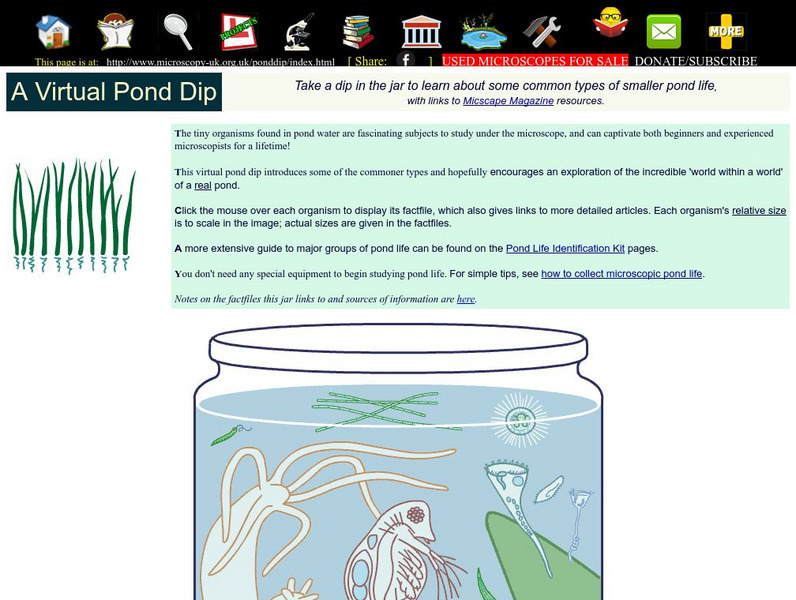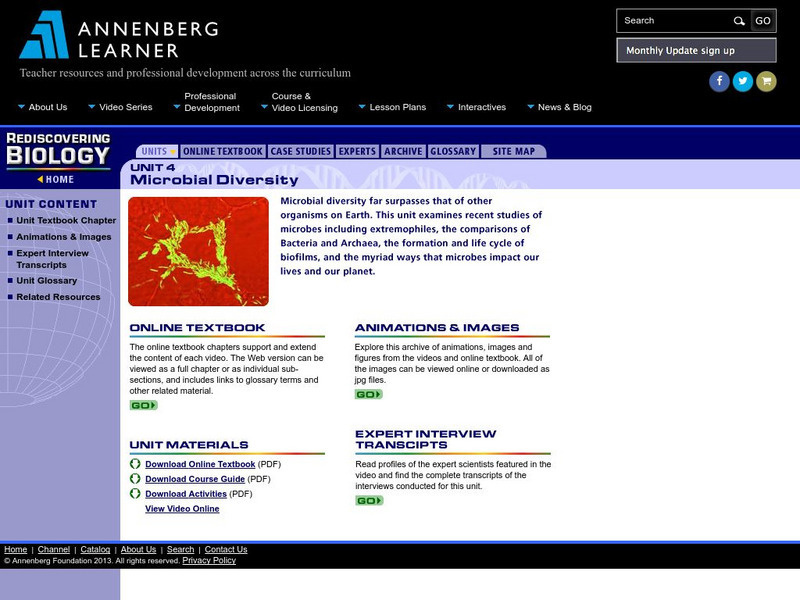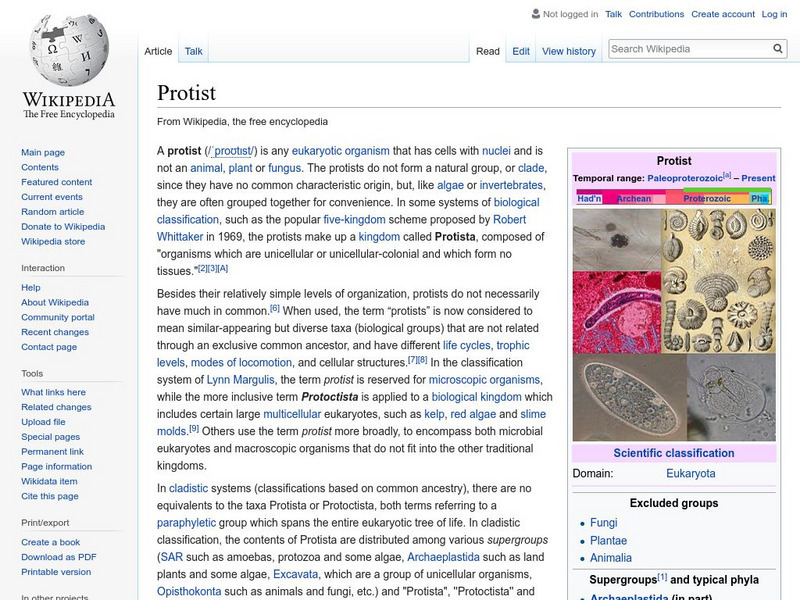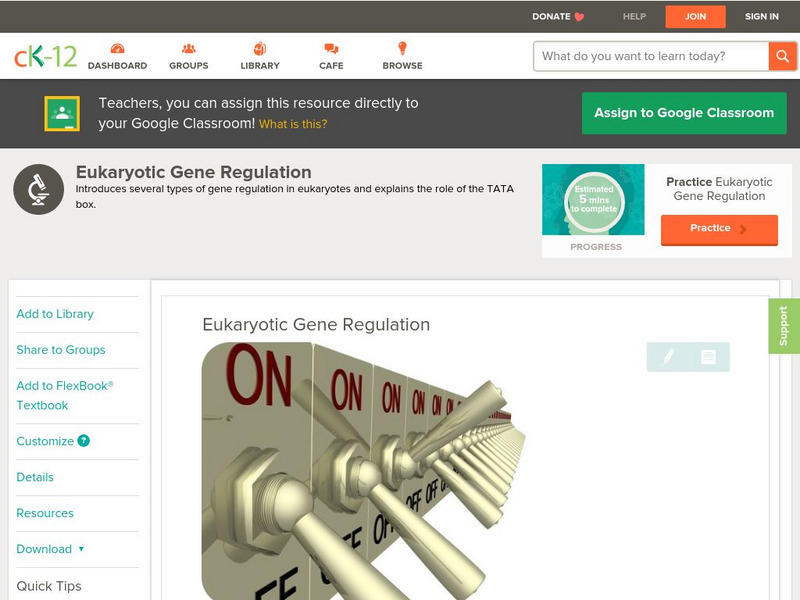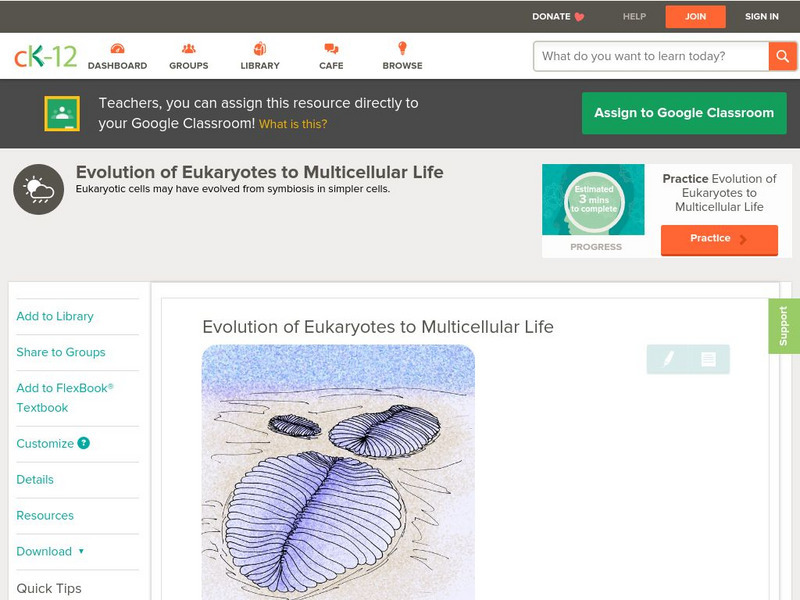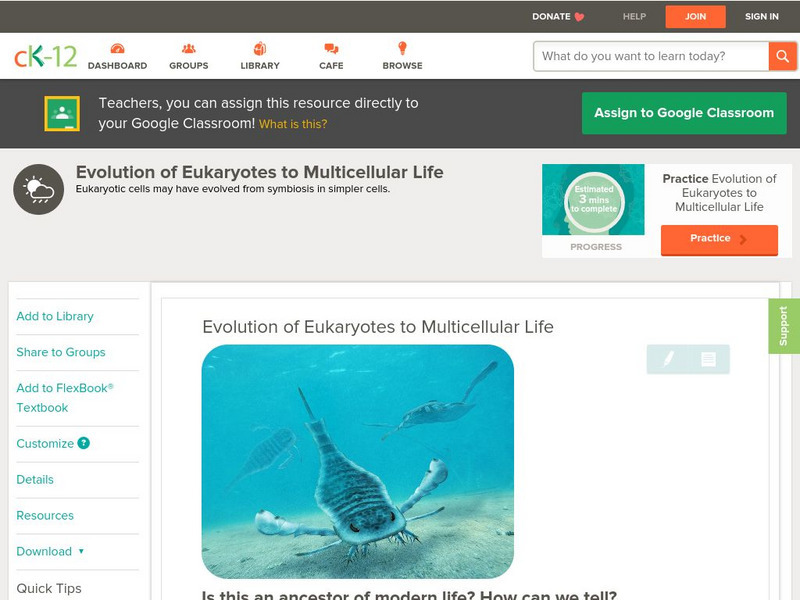Curated OER
Missing Links
Students change one animal group into another animal group by changing only a few body characteristics. This lesson plan is part of a multi-segmented unit on the diversity of life. In this session, students the basis of classification.
Curated OER
Diversity Debate
Students investigate the importance of dependency and diversity in a rain forest ecosystem. This lesson plan is part of a multi-segmented unit on the diversity of life.
City University of New York
The World of Cells: Plasma Membrane
This is a basic description of the structure of cell membranes. Site provides colorful pictures of each membrane.
Tree of Life Project
Tree of Life Web Project: Flagellates
Very good, in-depth overview of flagellates. Includes a chart listing all the groups of flagellates.
Tree of Life Project
The Tree of Life Web Project
The Tree of Life is a multi-authored, Internet distributed project containing information about phylogeny and biodiversity. The Tree of Life can be used to locate information about a particular group of organisms through their taxonomy.
Microscopy UK
Microscopy Uk: A Virtual Pond Dip
In this site, you will be introduced to some of the more common organisms found in a pond. Contains a thorough guide to small and microscopic pond life with links to other descriptive sources.
Annenberg Foundation
Annenberg Learner: Rediscovering Biology: Unit 4: Microbial Diversity
A complete learning module on microbial diversity that includes a downloadable textbook chapter, teacher guide, and lesson activities. The chapter can also be viewed online. In addition, there are animations, images, a video, and...
CK-12 Foundation
Ck 12: Prokaryotic and Eukaryotic Cells
[Free Registration/Login may be required to access all resource tools.] All cells are one of two types, prokaryotic or eukaryotic. Students will learn the structural differences between the two cells, be able to give examples, and...
Georgia Department of Education
Ga Virtual Learning: Earth and Life History
In this amazingly comprehensive tutorial you will learn about the geological and environmental changes that occurred during the geologic time scale.
Texas Education Agency
Texas Gateway: Transportation Classification: Moving on Up
In this learning module, students will begin to undestand the how kingdoms are classified.
Texas Education Agency
Texas Gateway: Cell Comparisons
Understand the difference between eukaryotes and prokaryotes in this interactive tutorial.
PBS
Pbs Learning Media: Gallery of Cells
While all cells have a great deal in common, there is no end to the variation among them. These images provide a sense of the wondrous diversity found in the world of cells.
Other
University of Cincinnati: Cells and Organelles
An in-depth discussion of the different parts of eukaryotic and prokaryotic cells as well as a thorough explanation of organelles within the cell. The text is better suited to high school and middle school. However, there is a picture of...
Biology Pages
Kimball's Biology Pages: Dna Replication
This page provides a fairly high level explanation of DNA replication with extensive graphics. Good description of this process.
Natural History Museum
Natural History Museum: Eukaryotes in Extreme Environments
Extremophiles thrive in the most extreme environments that are inhospitable for humans. This resource breaks down each type and provides a brief description. A good list of references is provided at the bottom of the page.
Other
Genetics: Dna Replication
Provides the three models of replication and shows how they would create different DNA strands. Good graphics and explanations.
Wikimedia
Wikipedia: Protist
Wikipedia provides information on the biological kingdom protista, including a list of different divisions of the kingdom.
CK-12 Foundation
Ck 12: Biology: Eukaryotic Gene Regulation
[Free Registration/Login may be required to access all resource tools.] Covers gene regulation in eukaryotes.
CK-12 Foundation
Ck 12: Biology: Evolution of Eukaryotes
[Free Registration/Login may be required to access all resource tools.] Discusses how eukaryotes evolved.
CK-12 Foundation
Ck 12: Earth Science: Evolution of Eukaryotes to Multicellular Life
[Free Registration/Login may be required to access all resource tools.] The evolution of eukaryotic cells and multicellular organisms.
CK-12 Foundation
Ck 12: Life Science: Protist Characteristics
[Free Registration/Login may be required to access all resource tools.] Protists are eukaryotes, which means their cells have a nucleus and other membrane-bound organelles. Most protists are single-celled. Other than these features, they...
BiologyWise
Biology Wise: Eukaryotic Cell Structure
The parts of a eukaryotic cell are presented with short descriptions of the structure and function of each of its organelles.
CK-12 Foundation
Ck 12: Life Science: Prokaryotic and Eukaryotic Cells
[Free Registration/Login may be required to access all resource tools.] There are two basic types of cells, prokaryotic cells and eukaryotic cells. The main difference between eukaryotic and prokaryotic cells is that eukaryotic cells...
CK-12 Foundation
Ck 12: Earth Science: Evolution of Eukaryotes to Multicellular Life
[Free Registration/Login may be required to access all resource tools.] The evolution of eukaryotic cells and multicellular organisms.







